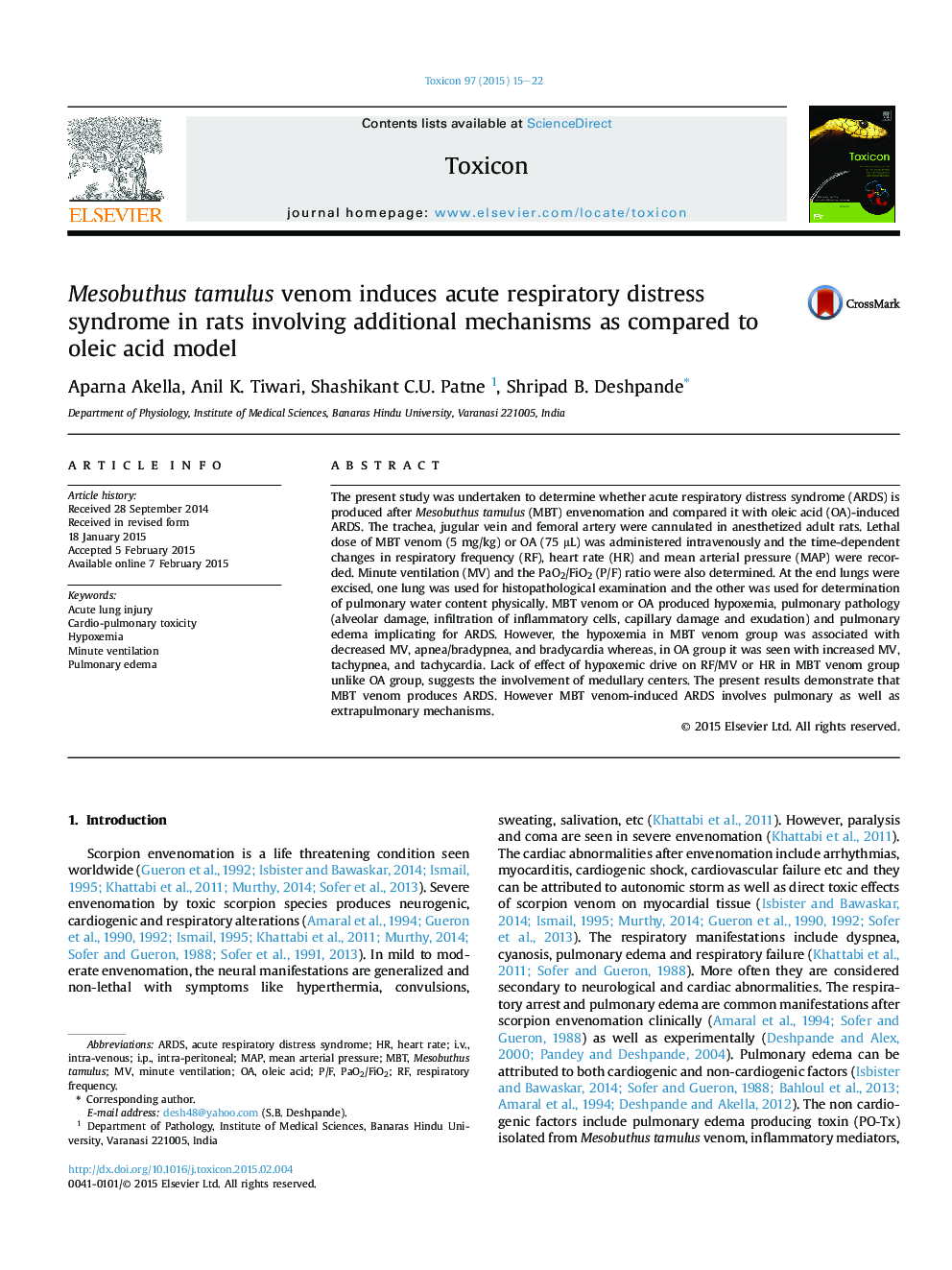| Article ID | Journal | Published Year | Pages | File Type |
|---|---|---|---|---|
| 2064591 | Toxicon | 2015 | 8 Pages |
•Respiratory pathology induced by MBT venom and oleic acid were compared.•Features of acute respiratory distress syndrome (ARDS) were seen in both groups.•Mesobuthus tamulus (MBT) venom and oleic acid (OA) produced hypoxemia.•Only OA-induced hypoxemia triggered the ventilatory changes reflexly.•MBT venom induces ARDS involving factors in addition to pulmonary causes.
The present study was undertaken to determine whether acute respiratory distress syndrome (ARDS) is produced after Mesobuthus tamulus (MBT) envenomation and compared it with oleic acid (OA)-induced ARDS. The trachea, jugular vein and femoral artery were cannulated in anesthetized adult rats. Lethal dose of MBT venom (5 mg/kg) or OA (75 μL) was administered intravenously and the time-dependent changes in respiratory frequency (RF), heart rate (HR) and mean arterial pressure (MAP) were recorded. Minute ventilation (MV) and the PaO2/FiO2 (P/F) ratio were also determined. At the end lungs were excised, one lung was used for histopathological examination and the other was used for determination of pulmonary water content physically. MBT venom or OA produced hypoxemia, pulmonary pathology (alveolar damage, infiltration of inflammatory cells, capillary damage and exudation) and pulmonary edema implicating for ARDS. However, the hypoxemia in MBT venom group was associated with decreased MV, apnea/bradypnea, and bradycardia whereas, in OA group it was seen with increased MV, tachypnea, and tachycardia. Lack of effect of hypoxemic drive on RF/MV or HR in MBT venom group unlike OA group, suggests the involvement of medullary centers. The present results demonstrate that MBT venom produces ARDS. However MBT venom-induced ARDS involves pulmonary as well as extrapulmonary mechanisms.
